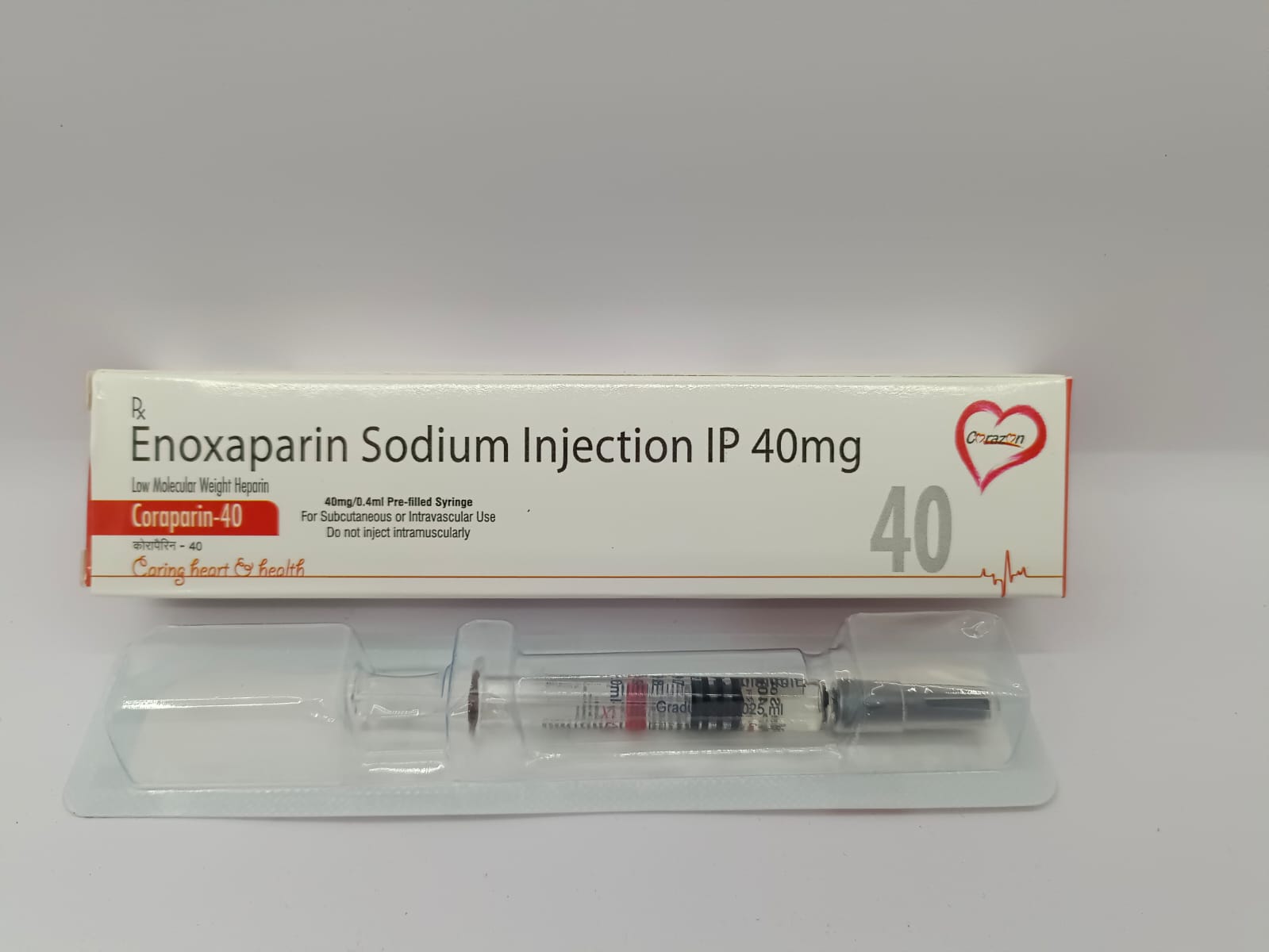ENOXAPARIN SODIUM 60MG INJECTION

Brand Name : CORAPARIN 60MG
Composition : ENOXAPARIN SODIUM 60MG INJECTION
Packing Type : AMP
Product Price : Rs. 626.4
Enoxaparin Sodium 60 mg Injection contains the composition that helps in the treatment of thinning the blood and maintaining its levels thereby preventing blood clots. There are several issues that may occur with the excessive formation of the blood clots such as heart attacks. The increment ratios of the clients can make the person's skin and also sustain the body's immunity level too. Hence the use of salt on a regular basis as per the instructions of the doctor will definitely prevent severe issues and will result in better stability of the body’s functions.
The Enoxaparin Sodium 60 mg Injection composition belongs to the class of anticoagulants and these have a specialty in making the blood thin thereby preventing clots. This not only just prevents the production of the clots but also treats the cause of it and breaks down the bonds of the blood clots. It is a low molecular weight heparin that is known to maintain the consistency of the blood. We do not recommend the use of the injection without the consultation of the doctor.
The results of the Enoxaparin Sodium 60 mg Injection will be better if the person follows the precautions in an adequate manner. Following the guidance of the doctor will help in the generation of the results. One must maintain the dose requirement as needed and prescribed by the doctor in order to keep the health strong. The common side effect of the injections is nausea, drowsiness, flatulence, Digestive issue, and other common ones. If you face any issue that is harming your health then it is a suggestion to report the doctor immediately and seek for a consultation. This infection is not used by pregnant women and neither for children. Store the injection in a cool place and this is only for external use.
Uses of Enoxaparin Sodium 60 mg Injection
There are several uses of the injection which only offer the results if taken with precautions.
- Improves the consistency of the blood.
- Reduces the chances of blood clots,
- Prevents the formation of blood on the extended level.
- Breaks down the bonds of blood clots.
- It is a low molecular weight heparin.
- It belongs to the category of anticoagulants which are blood thinners.
Precautions for Enoxaparin Sodium 60 mg Injection
The advised precautions with the products are mentioned below, kindly have a look.
- Do not overdose on the injection.
- Try to get yourself injected with the professionals.
- This injection is only for external use.
- The pregnant woman is advised not to get the dose of injection.
- Note that the professional applying the injection is using the new syringe.
Side Effects of Enoxaparin Sodium 60 mg Injection
There are some side effects of this injection that can affect the person with minor health issues. These are mentioned below.
- Nausea
- Vomiting
- Flatulence
- Burning sensations
- Itchiness of the skin
- Decreases red Blood cells count
Storage- Keep the Enoxaparin Sodium 60 mg Injection stored in a cool and dry place with no contact with sunlight.
Note- Enoxaparin Sodium 60 mg Injection is only for external use.
Address
SCO 5-6, Zirakpur-Panchkula-Kalka Hwy, near Hotel Sunpark, Wadhawa Nagar, Dhakoli, Zirakpur, Punjab 140603
Contact No.
+91-7087571536
Email
arlakcorazon@gmail.com
